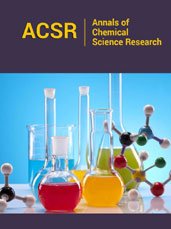- Submissions

Abstract
Annals of Chemical Science Research
Cholesterol, a Useful Framework for the Bottom-up Design of Molecular Motors
-
Open or CloseGabriela Lopes da Silva and Adelino M Galvão*
Center for Structural Chemistry, Institute of Molecular Sciences and Department of Chemical Engineering, Instituto Superior Técnico, Taguspark Campus, University of Lisbon, Portugal
*Corresponding author:Adelino M Galvão, Center for Structural Chemistry, Institute of Molecular Sciences and Department of Chemical Engineering, Instituto Superior Técnico, Taguspark Campus, University of Lisbon, Av Prof. Doctor Cavaco Silva, 2744-016 Porto Salvo, Portugal
Submission: February 11, 2025;Published: April 17, 2025
Abstract
Cholesterol can be photochemically activated, by opening the B ring of the steroid skeleton at the C10 position, to produce an active species. This active species can further evolve through several photochemical pathways or thermally produce vitamin D. In particular the active species has a double bond at C6=C7, in a cis configuration, that can be photochemically isomerized to a trans form in a unidirectional way and a fast non-radiative deactivation pathway. As such, this precursor of vitamin D has the potential to work as a bio molecular motor. However, the competing reactions limit the potential of this application. Using the basic steroid skeleton of cholesterol, DFT/TDDFT calculations were used to bottom-up design a new steroid framework that can eliminate the drawbacks of pre-vitamin D. In particular, a demethylated version at C10 was tested in silico to confirm the absence of competing pathways and the main features of photochemical molecular motors: unidirectional rotation and non-radiative deactivation channels. This biocompatible molecular motor can be functionalized with pharmacologically active principles enhancing its ability to cross bilipid membranes. The 10-demethylated analog was found to lack thermal interconversion to vitamin D which prevents the retention of the C6=C7 double bond. DFT and TDDFT calculations were used to study the photo-physics of cis/trans isomerization which, in the S1 Potential Energy Surface, can be accomplished with a low activation barrier and a non-radiative deactivation pathway through a Conical Intersection. Stereochemistry drives a preferential rotation direction effectively making this molecule a molecular motor and not a switch. Small modifications to the chromophore area of this steroid enable the tunability of the activating wavelength to the purple area of the visible spectra.
Keywords:Cholesterol; DFT/TDDFT; Photochemical molecular motors; Steroids
 a Creative Commons Attribution 4.0 International License. Based on a work at www.crimsonpublishers.com.
Best viewed in
a Creative Commons Attribution 4.0 International License. Based on a work at www.crimsonpublishers.com.
Best viewed in 








.jpg)






























 Editorial Board Registrations
Editorial Board Registrations Submit your Article
Submit your Article Refer a Friend
Refer a Friend Advertise With Us
Advertise With Us
.jpg)






.jpg)














.bmp)
.jpg)
.png)
.jpg)










.jpg)






.png)

.png)



.png)






